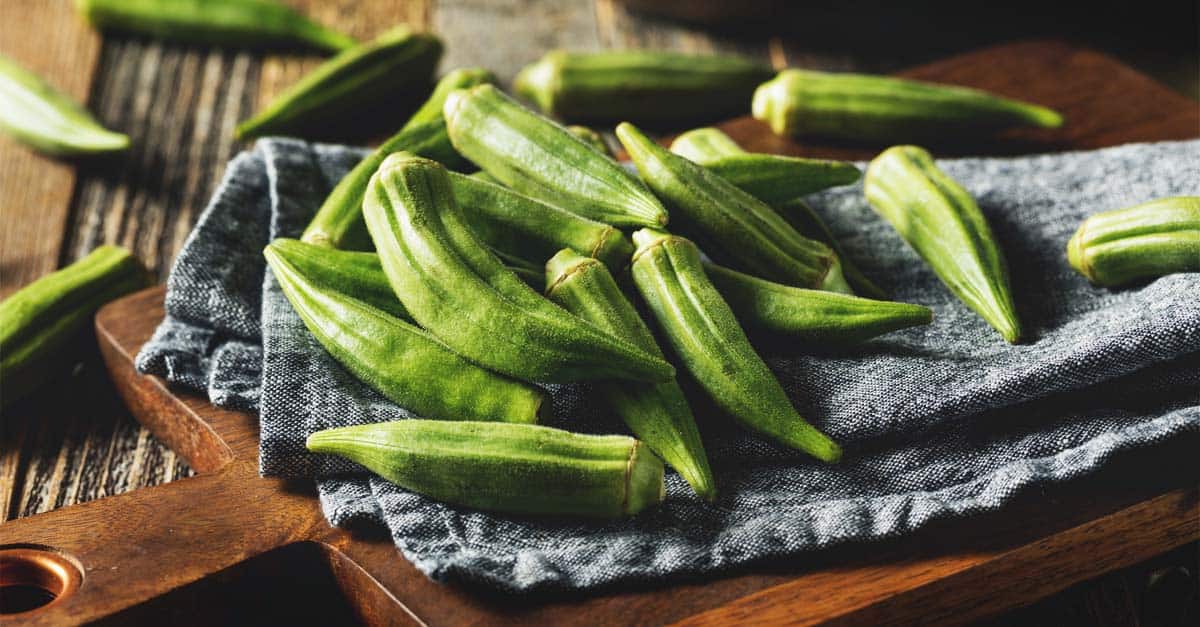
Roll the pods or place them in a bag and press down to remove the seeds. If seeds are split, cut them off immediately to prevent seed loss. When the pods are fully ripe and brown, cut them off.

#Growing okra full#
In an air temperature of 60 degrees F, transplant the seedlings in full sun 12-16″ apart in rows 3′ apart. Pick the most potent plant by cutting off the rest.

Plant 2-3 seeds in a peat pot at 80-90 degrees F until germination. Soak the seeds overnight to speed up germination. Plant them 3-4 weeks after the last frost. Sowing: Okra loves warmth, so it may be necessary to grow okra seeds indoors.Used in African, Mediterranean, and South American cuisine. This unusual member of the hibiscus family is native to North Africa, where it is still found in the wild. It ripens in about 55 days, and the tastiest pods are around 3 inches in size. Straight, thornless pods have an extraordinary taste and texture and can be fried, boiled, or pickled. After harvest, room cool or use forced air to bring the okra down to 50-55º F at 85-90% relative humidity, where it may be stored for 7-10 days. Below 50☏, okra pods are subject to chilling injury.Okra Okra is a vigorous and high-yielding plant up to 8 feet tall. Pods are harvested by twisting them off the plant or cutting with a knife. For this reason okra plantings must be picked almost every other day. Most varieties will lose their tenderness when they exceed 3" in length. Pod tenderness (which is desirable) decreases as size increases. Harvest and Storageįlowering will occur as soon as 45 days after seeding, depending on the variety, and pods are ready for harvest 5-6 days after flowering. Spacing ranges from 12-24" in the row (100-50 plants per 100 feet of row respectively) with 36" between rows. Plant populations range from 7,000-15,000 plants per acre, depending on the variety. Black plastic mulch with drip irrigation will increase yields. Okra grows best at 75-90º F and should not be planted outdoors before the soil temperature reaches 65º F at 4" depth, usually in early June. Plastic mulch, row cover and high tunnels can be used to help achieve the heat requirements. Okra is generally grown in locations where it will receive full sunlight throughout the day. Transplants may be started in the greenhouse, preferably on a heat mat kept at 75-90º F, and transplanted to larger pots 6 weeks before planting into the field at the 3- to 4-leaf stage. Seeds are sometimes soaked in water for 24 hours due to their hard seed coat to encourage germination. PLANT NUTRIENT RECOMMENDATION ACCORDING TO SOIL TEST RESULTS FOR OKRA Use a high phosphorous starter fertilizer mixed at a rate of 3 lb/50 gal water. If using transplants, apply a liquid fertilizer at transplanting, especially with cool soil conditions. If plants are to be grown on plastic mulch, the amount of nitrogen fertilizer to be sidedressed can be reduced, since leaching is minimized. Types and Varieties Okra VarietiesĪpply lime according to soil test to maintain a soil pH at 6.0-6.8. Though okra is often listed on pesticide labels along with eggplants, peppers, and tomatoes, they are not a related species and share few pests. There are also spineless varieties and red-fruiting varieties.
#Growing okra skin#
Most varieties have hairs on all parts of the plant that can cause skin irritation, so gloves and long sleeves may be needed for harvest. Okra does best in warm weather and will die with frost.

Its nutritive value includes high fiber content soluble in the form of gums and pectins that lower serum cholesterol, and insoluble fiber which helps maintain a healthy digestive system. The mucilage in okra acts as a thickening agent in soups, such as gumbo. The immature pods are used in soups, stir fries, pickles, and stews. Okra plants are drought and heat resistant. Okra, also called Lady’s fingers, is a heat loving plant in the hibiscus family.


 0 kommentar(er)
0 kommentar(er)
